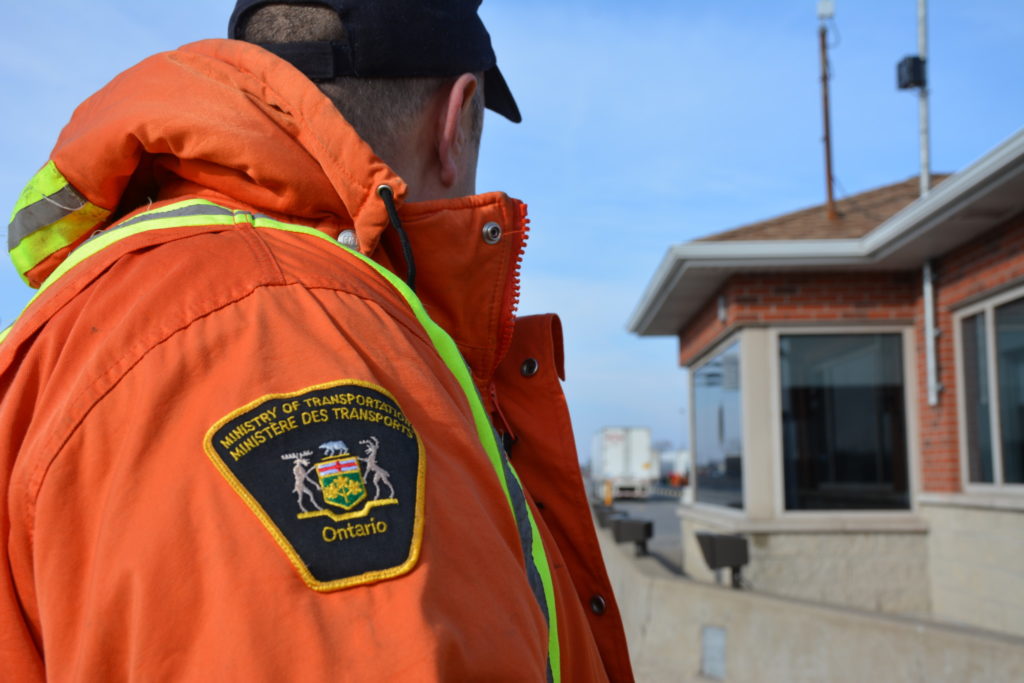Canadian Roadcheck inspections ground 22.6% of vehicles
Canadian enforcement teams placed 22.6% of inspected vehicles out of service during the international Roadcheck blitz that was conducted May 17-19, compared to a 23.8% out-of-service rate in the U.S.
Teams completed 3,359 Level 1 inspections on this side of the border, placing 760 vehicles and 191 drivers out of service, the Commercial Vehicle Safety Alliance (CVSA) reports. In the U.S., there were 33,196 Level 1 inspections, with 7,912 vehicles and 2,051 drivers placed out of service.
Level 1 inspections involve 37 steps and include vehicles and drivers.

A special focus was on wheel ends (tire and wheel) violations across North America, representing 22.8% of vehicle-related out-of-service violations. That still trailed brake systems, which accounted for 25.2% of the violations. Defective service brakes and lights, each representing just over 12%, and cargo securement at 10.6% rounded out the Top 5 issues.
In Canada and the U.S., false logs clearly dominated driver-related violations, at 42.6% of the total. Trailing behind that were drivers with the wrong class of licence (26.3% of the total), Hours of Service (8.1%), suspended licence (5.8%), and no medical card (4.9%).
But most equipment and drivers were good to go. Truckers earned CVSA decals for 10,135 power units and 3,876 trailers, meaning the equipment won’t be subject to inspections for the next three months.
Inspectors conducted 58,287 North American Standard inspections, consisting of 36,555 Level I inspections; 12,411 Level II inspections that involve reviewing the driver’s operating credentials and requirements and includes only vehicle inspection items that can be inspected without the inspector physically getting under the vehicle; 8,171 Level III inspections that consist of driver credentials and operating requirements inspection; and 1,150 Level V inspections that involve vehicle inspection items and may be conducted without a driver present, at any location.
In Canada and the U.S., loading was the top issue among the 95 hazardous material and dangerous goods violations, representing 31.5% of the total. This was followed by placards (21%), shipping papers (15.5%), package integrity (12.9%) and training certificates (5.9%).
Inspectors checked safety belt usage during inspections and identified 472 seatbelt violations.
Canada’s Top 5 vehicle OOS violations
- Brake systems – 588 — 38%
- Cargo securement — 287 — 18.6%
- Defective service brakes — 161 — 10.4%
- Lights — 133 — 8.6%
- Tires — 126 — 8.2%
Canada’s Top 5 driver OOS violations
- Hours of Service — 219 — 76.3%
- Wrong class licence — 21 — 7.3%
- False logs — 20 — 7%
- Suspended licence — 9 — 3.1%
- Violating licence restriction (tied) — 6 — 2.1%
Drugs (tied) — 6 — 2.1%
Canada’s Top 5 dangerous goods OOS violations
- Training certification — 16 — 34.8%
- Shipping papers — 11 — 23.9%
- Placards — 9 — 19.6%
- Loading — 4 — 8.7%
- Bulk package (tied) — 3 — 6.5%
Markings (tied) — 3 — 6.5%
Have your say
This is a moderated forum. Comments will no longer be published unless they are accompanied by a first and last name and a verifiable email address. (Today's Trucking will not publish or share the email address.) Profane language and content deemed to be libelous, racist, or threatening in nature will not be published under any circumstances.
great work keep our roads safe , I would like to see more follow up on driver hours of service and investigate. I believe the driver in 50% of the infractions were made to choose between load delivery or the job , this is disturbing given the cycle of drivers not abale to comply would reveal a more sinister coercion by the freight company is my bet
Your stats are somewhat misleading as you inspect more vehicles than the number of inspections. Tractor/trailer combinations are 2 (or 3) vehicles per inspection. You need to show the number of vehicles OOS relative to the number vehicles inspected, not the number of inspections.
It’s also based on who they pull over, if they only pull bad trucks and companies then you only get bad results. So as I see how it works to change laws. I have been watching and have noticed that pick up trucks in Ontario are at a disadvantage these days, you drive one your more than likely going to get pulled over, it’s a new tactic they say every pick up is commercial so they can prove the don’t get Free licensing in the future money and a carbon b.s. , then you have the speed part in Ontario that will all go on speed cameras do to revenue, but worst is yet to come commercial in Ontario will still pay for the licenses but you soon will never pass an inspection do to they move lines wires just to find something so the can say look you are now out of service mean while there are less service people to fix you on the road or in a scale, try to find someone after 5 pm or on the weekend not easy and cost the driver mega hours.
Thing will cool down in time when personal vehicles go on pay per use by mileage.